Jazz Estate’s South Side Chic
Bought by Bryant's owner, who added some of its plush, padded style.
A South Side bar owner recently opened a joint on the swanky East Side, fixing up an old jazz dive with the intent of bringing a little class to the neighborhood. That’s “man-bites-dog” news — proof that marketplace of ideas travels in both directions as our postindustrial city reinvents itself.
The owner is John M. Dye, who has brought the retro-chic vibe of the South Side’s 1938 Bryant’s Cocktail Lounge to the Jazz Estate, a venerable establishment at 2423 N. Murray Ave. Bryant’s has been an outlier on its part of town for decades with its hundreds of mixed drink recipes (none written down) and nary a beer in sight served in a dark, plush, padded room. Dye worked on that place for about six years, refining the details, until he bought the Jazz Estate late in 2015.
After a year of renovations, the Jazz Estate resumed business in November 2016, considerably freshened and newly plush and padded like its progenitor from the Land of the Polish Moon. This intra-city cultural exchange program is to be lauded.
The remodelled tavern remains a rectangle slipped in front of the street-level basement of an old house just about where Murray Hill derives the latter part of its name. Those who are color-blind to mauve hues would probably see this place in black-and-gray, for the palette here does not run to eye-popping pigments or patterns.
The bar is yes, padded, as are the swiveling, backed stools, and the floor is carpeted. Discreet blinds close off the street from the original plate glass facade. A new acoustic tin drop ceiling covers the bar area, while beyond, in the middle of the room, is a drum set awaiting its musicians. Beyond that, up a step, is a small seating area. Two completely remodeled bathrooms are across from the stage. You can see the entire place from any vantage point in the 1,409 square foot bar.
On the wall behind the bar, plaques list cocktail specialties. The “Earthly Delights” retails for $11.00, as does Uptown Funk. The Alahambra Highball is $9.00, as is the Cassidy’s Round-up, named after a fabric-backed wall covering used in the interior. The “Heart Leaf” also gets its name from a style of wallpaper. The names of the others were gathered from the labels on the paint cans used to decorate the place. The cocktail prices are on the upper limit of those charged on N. Murray Ave., or five times what you’d pay down the street during 3-9 p.m. happy hour at Rascals. The drinks are cheaper there because they’re not named for wallpaper and paint, which are very expensive.
A Sense of History
In some respects the place hasn’t changed much, due in part to space and physical limitations. The bar is on the south wall, where it has been for years in its Formica woodgrain glory. The ceiling, although new, is sufficiently retro to acknowledge its predecessor, which was a couple of feet lower. The cash register is also a retro model, and adds the loungey touch, as do the hanging lights and the general absence of fluff and nonsense on the walls or tobacco odors in the air. No posters, signed guitars, neon beer signs or other things to distract from the environment.
A general scrubbing and extensive mechanical and plumbing work has helped the interior, and the completely redone bathrooms are exemplars of design and sanitary convenience. You have no doubt that you are in the 21st century here. The air has cleared in the smoky Jazz club except for the music in the air, which is still smokin’.
Was First a Home
Much of the structure here was in place as early as 1893, when the city limits began expanding in all directions except east, where the lake blocked its course. North Avenue, just two blocks to the south, was named for the northernmost limits of the original settlement. The area north of North was owned by James Murray, a native of Scotland who was among the first settlers of the community in 1835. He worked at glazing and painting, so he would have been familiar with building construction and development. The street where the Jazz Estate is located was named after him, as is the subdivision in which it was located.
In June, 1911 owner Ed Davis found a good sized chunk of a building somewhere in the developing neighborhood, and had it hauled to this property and stitched to the rear of this building, “and set on a post foundation … repair roof,” as the permit for the $100 project read. By then the fur dressers and the cigar rollers were gone. But an automobile repair shop opened up, just to the east of the German Church, now known as Salem Evangelical Lutheran (Wisconsin Synod). North Avenue would soon be filled with auto-related businesses.
Shortly thereafter in 1911, Mrs. Davis took out a $235 permit to underpin the 20′ x 40′ x 7′ addition with 10-inch concrete block. In June, 1920 J. R. McAleavey put in the garage you can see today at the rear of the lot, accessed by a drive that runs along the south property line. That set him back $300.
A “Soft Drink Parlor” Added
The house then drops out of history, while the Roaring Twenties brought much change to the neighborhood as higher density buildings started replacing the old frame houses and duplexes of the area. The business district of North Avenue expanded to some of the side streets, like Murray Avenue as mixed-use developments like the building housing the Landmark Lanes (1927) began popping up. Little storefronts sprung out from in front of old houses in dense commercial districts like Brady Street.
In March, 1931, owner John Gibes planned a $1,200 expansion to the basement of the building here, erecting a street-level masonry addition with a glass storefront and an inset door. It was to be a “Soft Drink Parlor,” but instead was occupied by a real estate office and a law firm.
Real Estate was in a drought during the Great Depression, and so was the nation and its thirst. But by October 17th, 1933, with Repeal in place, the former real estate office became a tavern to be occupied by Richard E. Morgan. Morgan held on until July 17th, 1936, when Helen Jumps opened it as a tavern. “No dance floor,” the City Clerk cautioned in the license.
In June, 1951 the place was run by J. Pochiecha, who put up a “Drink Blatz Beer” projecting sign on the front of the building. In August, 1951, Miller, Pabst and Schlitz signs joined the Blatz in this all-Milwaukee display. The tavern was called “Lolly’s,” since nobody could spell or pronounce “Pochiecha.” Apparently, Gibes still owned the building.
In December, 1955 James R. Champion held the license for “Hill’s Bar,” changing it to “Coach Inn” and “Champion’s Coach Inn” by July, 1963. In 1972, he called it simply “Jimmy Champion’s,” selling it around 1978. The Champion name remains on a bar a few blocks to the west.
The building then came into the hands of Sal Monreal, who gave it the name “The Estate,” when it became a jazz venue. After later coming into the hands of Mike Honkamp, it continued as “The Jazz Estate,” until its recent purchase by the current operator.
During its four decades as a jazz venue, the Jazz Estate featured such musicians as Joe Henderson, Cedar Walton, Red Rodney, Eric Alexander, Al Foster, Chris Potter, Conrad Herwig, Brian Lynch, Eddie Gomez, Arturo O’Farrill, Jim Rotondi, Rick Germanson, David Hazeltine, Danilo Perez, Dan Nimmer and many others.
On Tap - Sponsored by Lakefront Brewery
- Founder's Oatmeal Stout
- Karben 4 Fantasy Factory IPA
- Lakefront Riverwest Stein Beer
- Lakefront SMaSH Ale
- Sierra Nevada Keller Weiss
- Enlightened Brewery Porter
Photo Gallery
The Verdict
- Name: The Jazz Estate
- Location: 2423 N. Murray Ave. Milwaukee
- Neighborhood: Murray Hill
- Subdivision: [James] Murray’s Addition
- Phone Number: 414-964-9923
- Website: www.jazzestate.com/
- Facebook: @jazzestate
- Twitter: @JazzEstate
- Description: Prohibition-era basement meets 21st Century Swank in subdued, intimate setting
- Capacity: Could not be determined
- Year Established: A tavern since the repeal of Prohibition and a licensed “Soft Drink Parlor” before. A Jazz venue for over 40 years, under current ownership since October, 2015; extensive remodelling followed by November reopening.
- Year Building Constructed: Original structure 1893; small building moved and joined to rear, 1911; current licensed premise added to front lower level of building in 1931
- Estimated Annual Rent: 1,409 sq. ft. bar area at $22.55/sq. ft. = $31,772.95 per year, according to the City Assessor’s calculations. Operator owns building through LLC.
- Property is assessed at $53,300 for the 5,080 sq. ft. lot ($10.50/sq. ft.) and $259,700 for the 3,044 sq. ft. building for a total assessed value of $313,000.
- Property taxes: $7,986.75
- Property Owner: 2423 N. Murray LLC., Atty. John Germanotta Registered Agent. Building purchased 12/21/2015 for $296,000
- Business Owner: The Jazz Estate, Inc. John M. Dye, agent, DOB 08/03/1974, 100% owner
- Business: Alcohol, 75%; Entertainment, 25%
- Walk Score: 93 our of 100, Walker’s Paradise. City Average: 61
- Transit Score: 58 our of 100, Some Transit. City Average: 49
- Bike Rack: Plenty in the area
- Aldermanic District: 3rd; Nik Kovac
- County Supervisor District: 3rd; Sheldon A. Wasserman
- Police District: 1
If you think stories like this are important, become a member of Urban Milwaukee and help support real, independent journalism. Plus you get some cool added benefits.
Bar Exam
-
Your Office Is New and Truly Unique
 Nov 13th, 2025 by Michael Horne
Nov 13th, 2025 by Michael Horne
-
Sip & Purr Is Unique Cafe and Bar
 May 1st, 2025 by Michael Horne
May 1st, 2025 by Michael Horne
-
Lakefront Brewery’s New Riverwalk Patio
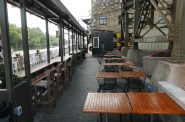 Jul 26th, 2023 by Michael Horne
Jul 26th, 2023 by Michael Horne


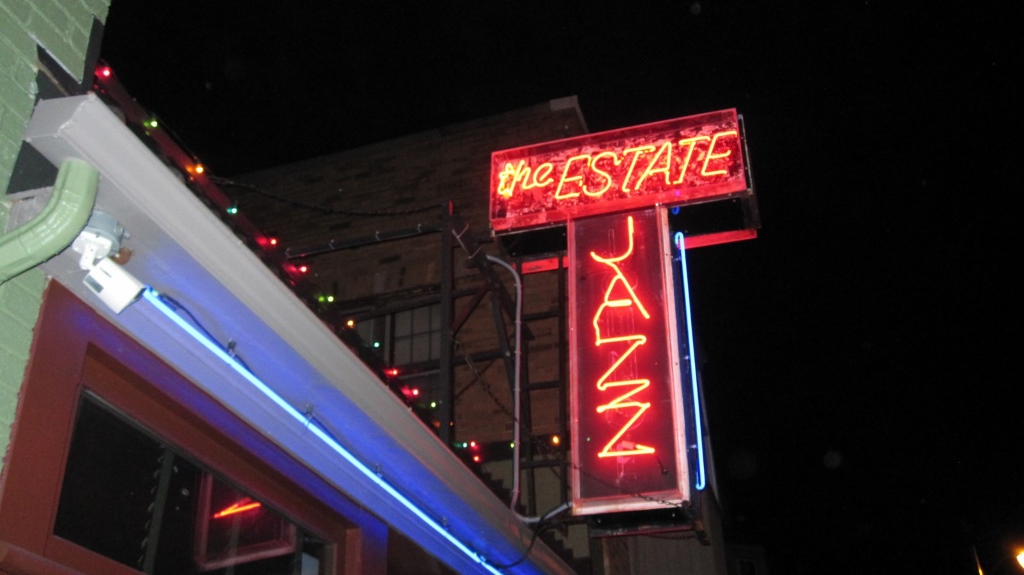
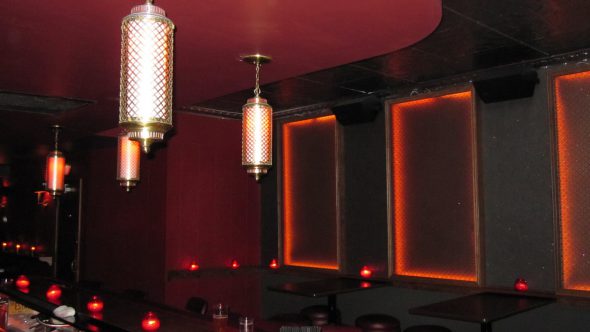
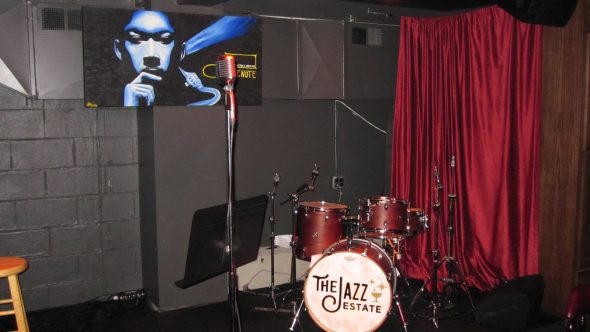
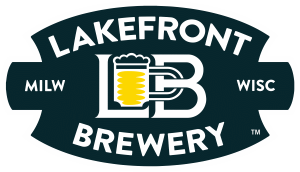
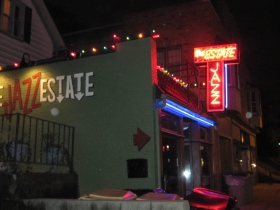
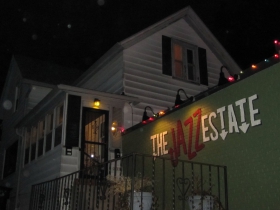
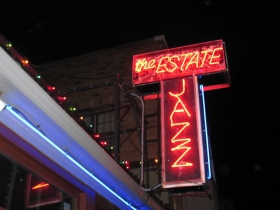
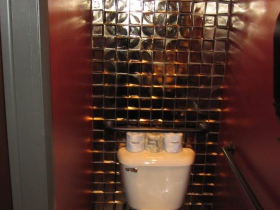
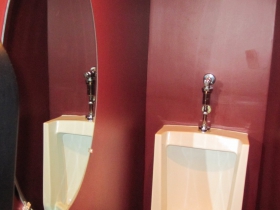
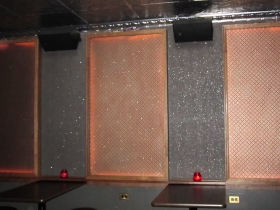



















I was a regular there back in the very early 80’s when I worked across the street. I haven’t been back in 35 years, since I left town. But those were good times. I’m glad to know it’s still going. I just hope it doesn’t go hipster. That would suck ass.
Jazz doesn’t do hipster.
I haven’t been to the “new” Jazz Estate yet (but will soon try to go), especially since the photo you took up above, Michael Horne, makes it look extremely elegant (my favorite colors). Great article!